How well we remember when Hawaiian Airlines took delivery of their then-new Boeing 717’s, and we stepped aboard for the first time. It was exciting and a huge upgrade to the prior interisland fleet of DC9-30. But that was two decades ago, and as with everything in life, that era will soon come to an end.
The airlines that still fly the 717 are now just three. Delta operates most of them, with 88 aircraft. Hawaiian has 20. Qantas also has 20 and has begun the replacement process. That’s all that is left.
History of the iconic Hawaiian Airlines Boeing 717.
Made by McDonnell Douglas and then called the MD-95, the planes were first delivered in 1999. The name change to Boeing 717 reflected the company’s acquisition by Boeing in 1997.
It was a match made in heaven, so to speak. The prior DC-9 fleet and the 717 fleet were designed to serve routes like those here in Hawaii – frequent, short hops with smaller runways.
The new fleet still looked like the DC-9 predecessor, albeit with larger beefy engines mounted at an angle. It had the same quality and reliability associated with its lineage but with size, technical and cosmetic improvements.
Not a great match. The aircraft was born at the wrong time since it was truly an MD plane but bore the brand of Boeing. In a sense, it was doomed to fail for just that reason alone. It was a plane that was incompatible with Boeing planes in terms of managing airline fleets and required its own unique maintenance and operations. As a result of many issues, Boeing only ended up building 156 planes before ending production.
Customers were more inclined towards the newer Airbus and Boeing 737 variants, and for most passengers, those were good choices and fits. But for Hawaiian, that was not the case. The few companies who purchased the 717 planes liked them very much. Past CEO Mark Dunkerly once said, “It’s a great little secret. For what we do here in Hawaii, there’s no better aircraft built today or even on the drawing board.” The planes have been perfectly suited to short-haul, frequent flights, and high reliability. In fact, the Hawaiian planes make up to 16 flights each day. And that extreme usage is a part of the aging problem.
Until recently, there were no good replacement options for the interisland 717 fleet.
Both Airbus and Boeing failed to create a good fit in that 100+ seat market and instead created larger, longer-range aircraft, which apparently were more profitable to sell. At the other end of the scale, regional jet makers Embraer and Bombardier targeted smaller jets.
Enters Airbus A220 – one of two replacement choices.
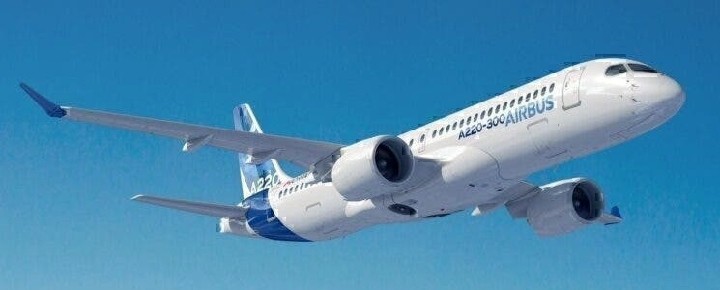

The A220 is a 100-160 passenger narrow-body aircraft that fits between smaller regional jets and the more traditional A321 and 737 aircraft. It comes in two variants depending on the requirements. It is a 3×2 economy cabin, the same as the current 717. A220’s 3×2 interior is above, and you can see it is very similar to the current fleet.
The other option for Hawaiian is the Embraer E2.
These jets fit a similar need, although they accomplish it differently. They do remain a possibility for Hawaiian, albeit unlikely. Also coming in two variants, the E190-E2 typically seats about 100 passengers while the E195-E2 seats about 30 more on average. It is a 2×2 economy cabin (image below) with slightly narrower seats than the A220.
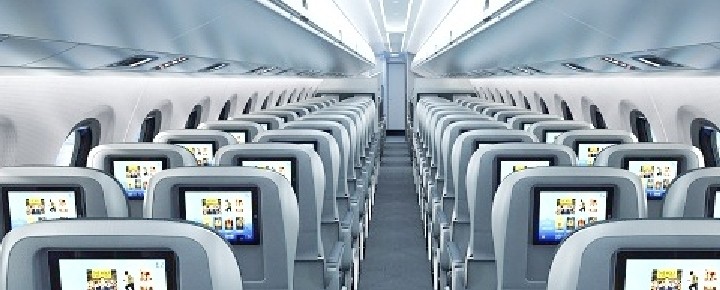

How long will Hawaiian continue flying the 717?


Delta has said it plans to operate its 717 fleet through this decade. There is no doubt that Hawaiian aircraft of the same age are more worn than are Delta’s due the frequent, short-distance island flights. We spoke with CEO Peter Ingram about the 717’s. He said they plan to operate them through mid-decade, which would mean for at least another few years. We would be surprised to see Hawaiian extend their use of the 717’s much beyond that point. With lead time, that means we should start learning about their replacement process very soon.
Do you remember the 717’s when they were new? What’s your take on the best option for their replacement?
Get Breaking Hawaii Travel News
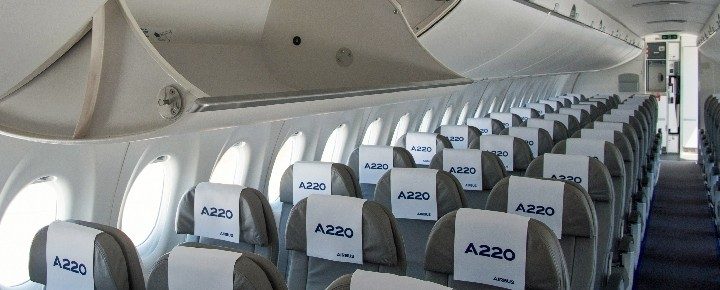
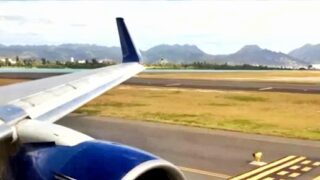
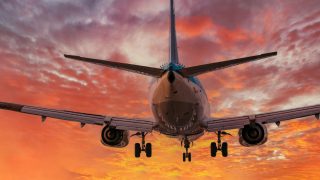


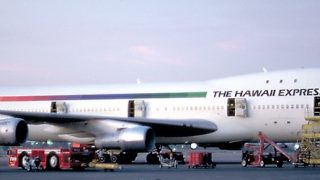
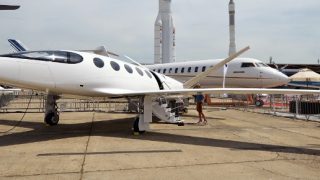
We first flew the Hawaiian 717 in 2018. Yes, I thought it was perfect for the inter-island routes. We first flew inter-island on Aloha 737s back in 1979, later inter-island with Island Air and their turbo-prop DeHavilland DH-6, which I enjoyed at the lower altitude. When I first read about Airbus buying the 220 I thought it would be the perfect fit to replace the 717. I have not flown on one yet, but everyone I have spoken to about thinks it is a great plane.
Trying to book flight to Lihue from Honolulu on line. Not able to access site to reservations availability. I already have a Hawaiian Airlines visa credit card, a frequent flyer account, and receive email communications from Hawaiian Airlines. I don’t want to apply for a mobile app. How can I just start a reservation by first booking flights? I will call 1-800-367-5320, but I keep being put on hold. I would prefer to book on line.
Would Hawaiian Airlines also be entertaining the DHC Dash-8 (Q400)? For general reference, the following is the current price for each option:
A220 $91,500,000
E190 $51,000,000
Q400 $32,200,000
I think the A220 would be a great replacement for the 717. Having flown the Delta versions, they actually have larger overhead storage than most current jets. They also have bigger windows. They are much more eco-friendly and efficient which is great for the islands.
The engines are not ideal for high cycles and short hops. “High geared” from what I learned and as such will never be very efficient.
When it comes to having fun and sightseeing at the same time (as well as avoiding the ridiculously long times in terminal) I love Mokulele.
Been flying the airlines since I was a child. DC-9 favorite it was such a proud looking aircraft! I use to call it the “proud bird” of Hawaii.Keep that beautiful tail on your birds please. I am nearly seventy now would like to see those tails in the sky! Thank you!
I remember flying on Hawaiian’s predecessor aircraft which were DC 9-50s not 30s. To show how long I have been flying to Hawaii, I also remember flying on Mid-Pacific’s YS11s.
How I happily remember the DC-3’s….. comfort!! And reliable.
You said ” (E2’s 2×2 interior below)”, but the photo is missing.
Hi Rob.
Thanks. The image is there now.
Aloha.
So I see a picture of the E2’s 2×2 interior where the picture of the A220’s 3×2 interior is, but there is a picture of a 717 on a runway where the picture of the E2’s 2×2 interior should be.
Thanks for keeping an eye on this topic.
The 717 are quieter than the DC-9 if I remember correctly
Hi Paul.
Thanks for checking and reporting on that. We think the images are all sorted out now. If not, please let us know. And yes, the 717 engines are quieter. Pretty much the same as comparing a 732 to a 738 in terms of engine noise.
Aloha.
Oh dear. Airbus try to position the A220 as a smaller version of a 3 series but it is much more a Regional Jet. Very cramped and will no doubt usher in all the checked carry ons with broken computers that Hawaiian will not pay for. I love the 717’s, the MD80’s and the DC9’s. The Embraer is actually not a bad aircraft but it is a Regional Jet also with all that entails. Any chance of bringing the Super Ferry back?
Hi Rich.
There will not be a ferry in Hawaii. That, at least, is very clear.
Aloha.
Sorry, my comment was meant to be ironic…
Keep in mind that the A-220 is NOT a design of Airbus. The original design was by Bombardier as a regional jet and was named the CS-100. Airbus bought the C series (I am not sure if they also got control of Bombardier). Airbus rebranded the plane as the A-220. It is NOT part of the A 3 series at all.
A bit of useless trivia on the 717.
They do not have the range to fly from Seattle (the factory) to Hawaii. So they remove the seats (or just not install them) and install large fuel tanks in the cabin. Then once they arrive the cabin tanks are removed and the seats are installed.
images.search.yahoo.com/yhs/search;_ylt=Awr46udPmYxhxw8AYEksnIlQ?p=717+fuel+tanks&hsimp=yhs-att_001&hspart=att&type=sbc_dial%2Fhp-banner-v2Aug27&fr=yhs-att-att_001&fr2=p%3As%2Cv%3Av%2Cm%3Apivot#id=26&iurl=htt
Factory was in Long Beach
In 2008, as I settled into my seat on the 717 going from Honolulu to Hilo, I wondered “how in the world did they get these here since they don’t have the range?” Ferry tanks. I’ve seen a picture of the cabin with enough seats removed to accommodate the 4 200 gallon tanks. Being a Rolls-Royce engineer, proud to be on the team providing the powerplants.
It would certainly please me if HA were to purchase an American made plane rather than a foreign one which are all subsidized in their manufacture, in some way, by their governments.
The one challenge that Hawaiian will need to overcome is how the engines on these new generation planes will fare with the short hop action that is interisland. One way to overcome that is to do what Southwest does with their 737-800’s and 8-max jets – fly them over from the mainland, have them do a couple of hops interisland, and then fly them back to the mainland. I suspect that is one option that Hawaiian could do in better utilizing the A320 NEO.
…..to even out the wear and to vary the severity of the cycles in the cycle count?
Stan, that works for Southwest because they have the massive route network on the mainland where aircraft can fly out to Hawaii, hop among the islands, and then ‘slip’ back into their huge route network on the mainland. Hawaiian doesn’t have that same luxury… their network is hubbed in HNL with flights out to the usual mainland cities, particularly along the west coast. Hawaiian’s interisland network is so high-frequency that it needs its own dedicated interisland fleet to serve that part of its network. Imagine if you had to wait for inbound flights from Seattle, Los Angeles, Phoneix etc (5, 6 hours at least) before an aircraft becomes available to hop from HNL to KOA, etc? It might work for a small percentage of interisland flights.